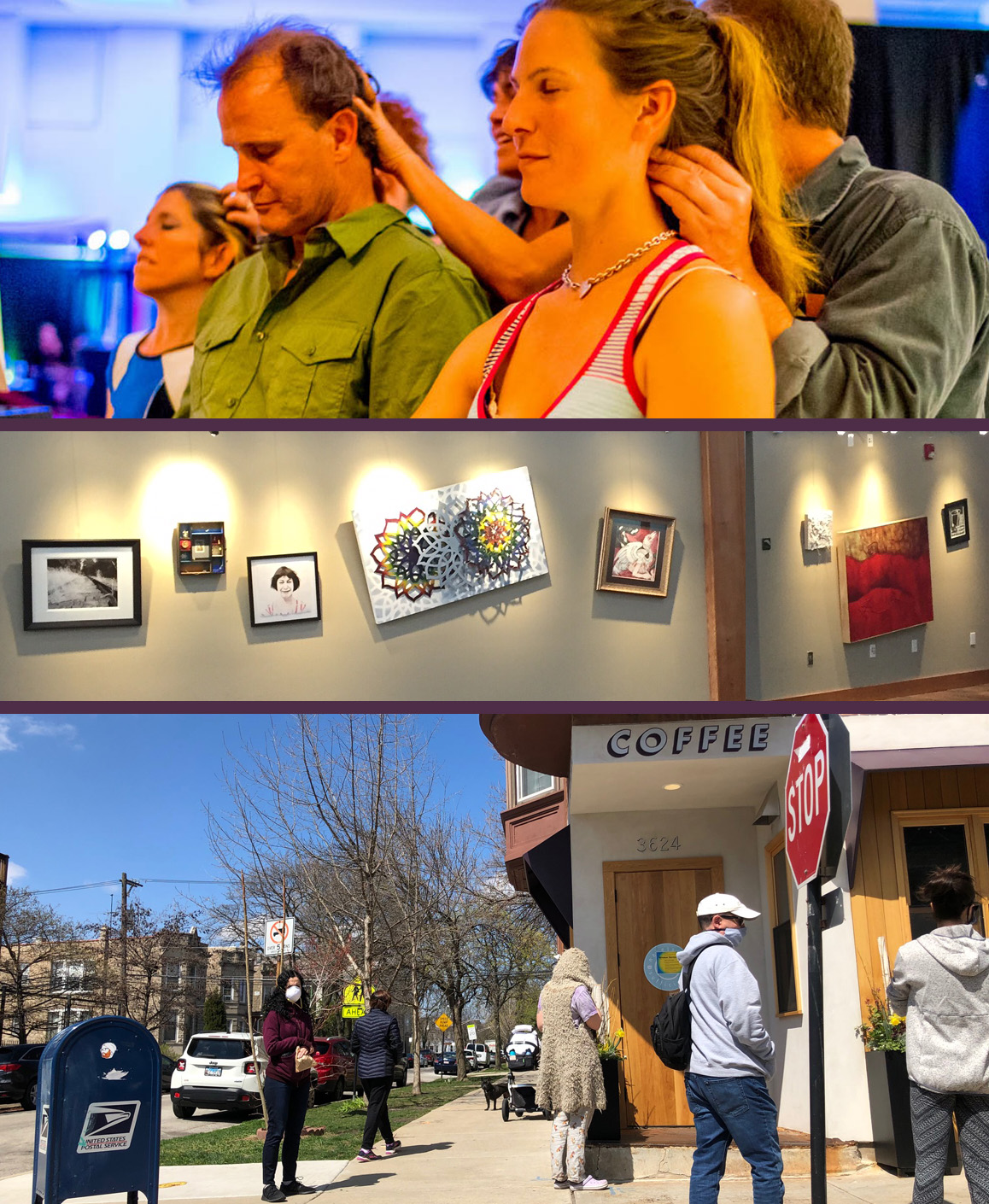Omphaloskepsis Blog
Art of Connection Through Participation
Sep 6, 2020
Last time, I broke a long silence to let you know my life in art had been evolving from 2-D to 3-D – to social sculpture in fact, and to forms that are increasingly participatory.
Not that painting isn’t interactive. But I began to want to use the tools of community building. Hence, my café in Chicago, a reaching out in every sense. Art on the walls of a museum or gallery posits that people will come to you, enter the more elite space for you. With the café, I came to people, in a not-so-ritzy urban environment. Because it is a take-out window, I reach out literally, bringing the element of touch – and participation.
Activation, authorship, and community, writes Claire Bishop, are the most frequently cited motivations for almost all artistic attempts to encourage participation in art since the 1960s. “The spectacle – as a social relationship between people mediated by images – is pacifying and divisive, uniting us only through our separation from one another.”1
Writing 15 years ago, Bishop could have had that insight in our current pandemic state. For we are divided, and unified, by the power of our enforced separation. How does participatory art take on energy in this environment?
One element of Participatory Art’s aesthetic language is connection, very often through discomfort. I have located myself and others here; The Incredible Intensity of Just Being Human, a traveling exhibit I created to address the stigma and silence surrounding mental illness. In every exhibit the art was hung askew, causing discomfort in staff and visitors alike. In one instance the receptionist straightened the artwork daily because she found it so unsettling.
Ironic participation does not always induce discomfort. It can facilitate the feeling of full-hearted participation and a sense of belonging in the community. For example, in my piece for the Seattle Erotic Arts Festival, “Poor Impulse Control,” where volunteers allowed strangers to touch and stroke their hair. Festival participants took it upon themselves to recreate it daily during the hours I was not present.
Art no longer wants to respond to the excess of commodities and signs, but to a lack of connection, wrote Jacques Rancière in ‘Problems and Transformations in Critical Art’ 2004.
Art connects us. My mission as a human and my job as an artist is to foster deep connections through Art. Much of my work deals with permission, access and boundaries and seeks to bring to light the crisis in relationship between art and society by appropriating my audience. It comes from an authentic desire to engage my audience.
I have a puzzle for you. A puzzle for our era, which you will hear more about next time. This time, a question. What kind of art can provoke your participation in commerce, kitsch, and critical thinking? I am inviting you, dear visitor, to have a seat at the table. And I am inviting you, dear artist, to have a seat at the table.
Are you ready?
[IMAGE: Top to bottom: Poor Impulse Control SEAF. The Incredible Intensity of Just Being Human, Blakely Hall Issaquah. necessary & sufficient coffee placemaking in art.

1. Participation, Introduction/Viewers as Producers by Claire Bishop, Co-published by Whitechapel and The MIT Press, 2006, p. 10
 MENU
MENU